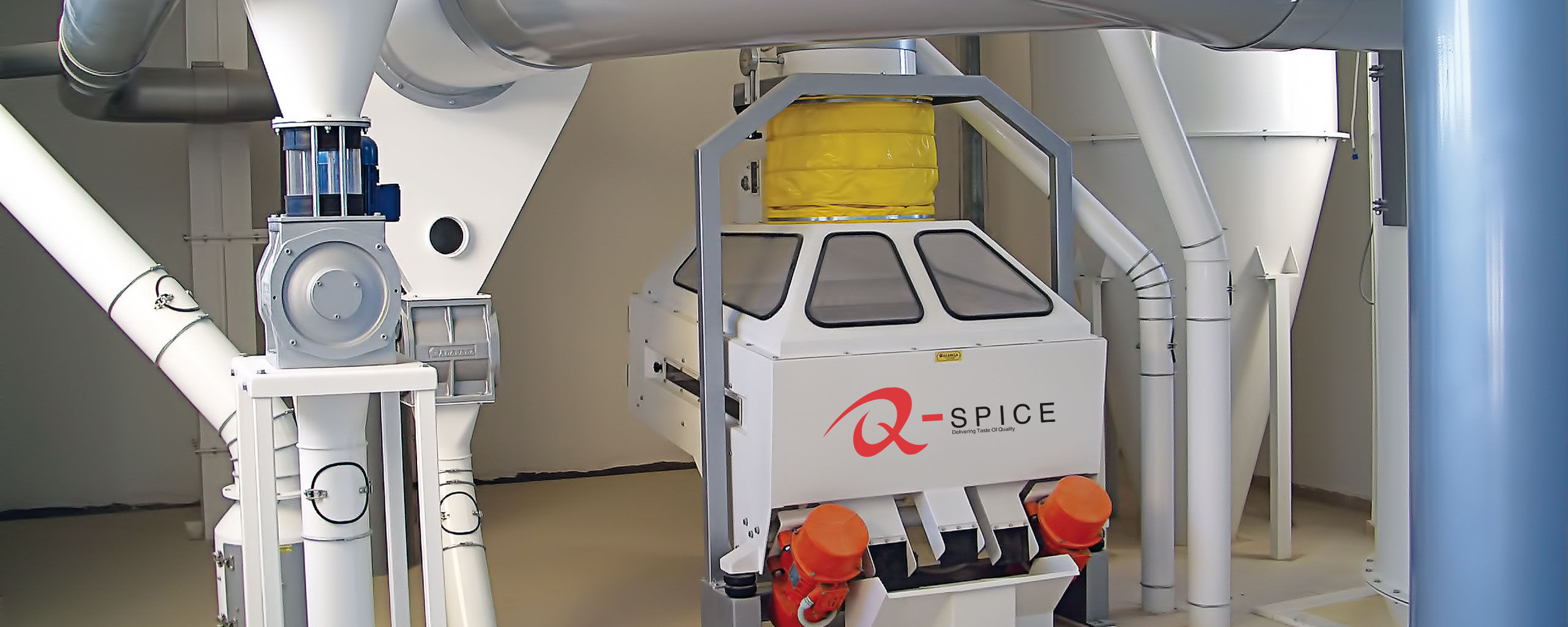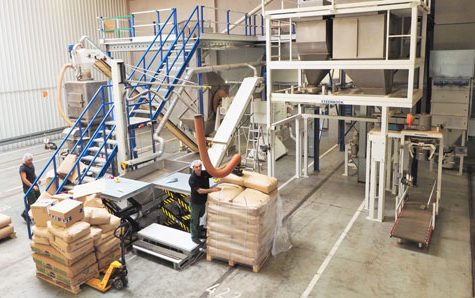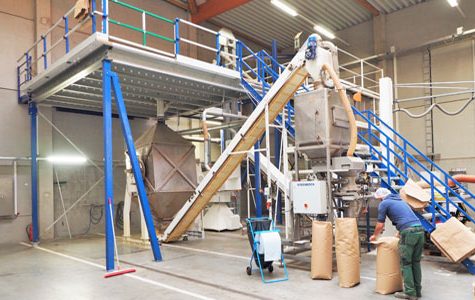
De-Stoner


The Essential Processes in Processing, Sifting, and Repacking Herbs for Purity and Quality
When it comes to herbs and spices, purity and quality are of utmost importance. The journey from raw herbs to the final packaged product involves several critical processes aimed at purifying the herbs, removing impurities, and ensuring consistent size and quality. In this article, we will explore the key stages involved in processing, sifting, and repacking herbs, as well as purifying them from dust, stems, minerals, and contaminants.
Per-cleaner
The initial stage in herb processing is the per-cleaner, where primary cleaning takes place. This step involves the removal of very fine-sized particles from the bottom, as well as the elimination of any excessively large pieces. By doing so, the per-cleaner effectively removes impurities such as dust, dirt, and larger foreign objects, ensuring a cleaner starting material.
Brusher
After the per-cleaner, the herb materials move on to the brusher. Here, the herbs are crushed to the desired specifications. The purpose of this process is to break down the herbs into smaller, more manageable pieces. By crushing the herbs, they become easier to handle and process further, allowing for better control over the final product's texture and consistency.
Indented Cylinder
The indented cylinder is a crucial stage in the purification process. It is responsible for separating the length stems from the herb materials. This separation ensures that only the desired parts of the herbs are retained, while any longer stems or unwanted plant material are removed. By selectively eliminating these elements, the indented cylinder helps maintain the quality and purity of the herbs.
Sifter
To achieve a consistent and uniform size, the herb particles pass through a sifter. This stage plays a crucial role in controlling the granules of the herbs. By sieving the herb particles through a mesh or screen, the sifter refines them, removing smaller particles and any remaining impurities. This meticulous sifting process guarantees that the final product meets the desired specifications and quality standards.
Gravity Separator
To further enhance purity, a gravity separator is employed. This specialized equipment separates heavier substances, such as stones and sand, from the herbs. By utilizing the principle of weight and density, the gravity separator effectively removes these unwanted materials, ensuring a purer final product. The separation process is crucial for maintaining the integrity and quality of the herbs.
Magnet
Iron particles or magnetic materials may occasionally be found in herbs. To mitigate this potential source of contamination, we strategically install 10,000 and 12,000 Gauss magnets at key points in our production lines — at the outset, midpoint, and conclusion of the process. Positioned to attract and capture any iron components, these magnets serve as a preventive measure, ensuring that herbs remain uncontaminated throughout subsequent processing stages. This meticulous step ensures the ultimate purity and safety of our final product.t.
Metal Detector
The presence of metallic contaminants can compromise the quality and safety of herbs. Therefore, a metal detector is employed to identify and remove any unwanted metals, including iron, brass, stainless steel, and others Sensitivity 1-1.5mm. By effectively detecting and eliminating these contaminants, the metal detector ensures that the final product is free from any metallic impurities.
Scale
Accurate weighing is vital for consistency and standardized quantities. The scale is used to weigh the herbs precisely according to the desired weight or packaging requirements. This stage guarantees that each packaged product contains the specified quantity of herbs, allowing for uniformity and accuracy.
Packing
The final stage involves the careful packaging of the processed and purified herbs. The herbs are packed into appropriate containers, such as bags, jars, or boxes. During this stage, proper labeling and sealing are essential to maintain the herbs' freshness, aroma, and quality. Well-packaged herbs also provide protection against external factors that could compromise their integrity.
Sterilization We have four ways to sterilize herbs: steam sterilization, eto sterilization, CO2 sterilization, irradiation sterilizationsummary
The processes of processing, sifting, and repacking herbs, along with purifying them from dust, stems, minerals, and contaminants, play a vital role in ensuring the purity and quality of the final product. Through stages such as per-cleaning, crushing, sifting, separating, and removing impurities, the herbs undergo meticulous processing to deliver a premium product to consumers. These critical steps, combined with accurate weighing and careful packaging, guarantee a consistent and exceptional experience for herb enthusiasts worldwide.
Sterilization Methods for Herbs
-
Steam Sterilization
Steam sterilization, also known as autoclaving, involves exposing herbs to high-pressure steam. The steam effectively kills microorganisms, such as bacteria, viruses, and fungi, by denaturing their proteins and disrupting their cellular structures. This method is widely used in the food industry for its effectiveness in achieving microbial reduction.
-
Ethylene Oxide (ETO) Sterilization
ETO sterilization involves the use of ethylene oxide gas to kill microorganisms on herbs. It is a widely used method for sterilizing heat-sensitive materials. The gas penetrates the packaging and the herb's surface, effectively destroying bacteria, molds, and other pathogens. However, ETO sterilization requires proper ventilation and aeration to remove any residual gas, as it can be toxic.
-
CO2 Fumigation
CO2 (carbon dioxide) sterilization, also known as supercritical fluid extraction, is a method that utilizes supercritical CO2 to sterilize herbs. Under high pressure and temperature conditions, CO2 reaches a state where it exhibits both gas and liquid properties. Supercritical CO2 can penetrate plant tissues and effectively inactivate microorganisms, making it a gentle and environmentally friendly sterilization method.
-
Irradiation Sterilization
Irradiation sterilization involves exposing herbs to ionizing radiation, such as gamma rays or electron beams. The radiation damages the DNA and other cellular components of microorganisms, rendering them unable to reproduce. This method effectively kills pathogens and extends the shelf life of herbs. However, it is important to note that proper regulation and control are necessary to ensure the irradiation process does not affect the herb's nutritional quality.
It is worth mentioning that the choice of sterilization method may depend on various factors, including the type of herb, its intended use, and regulatory requirements. Each method has its advantages and considerations, and it is important to follow industry best practices and guidelines to ensure the safety and quality of sterilized herbs.
